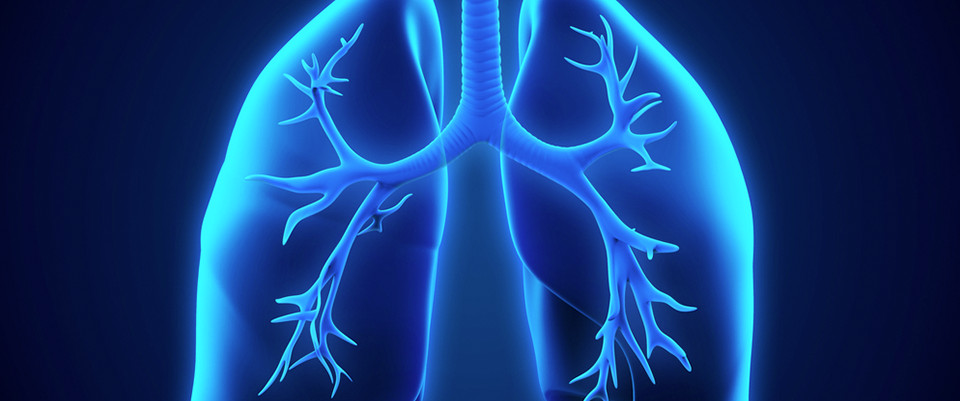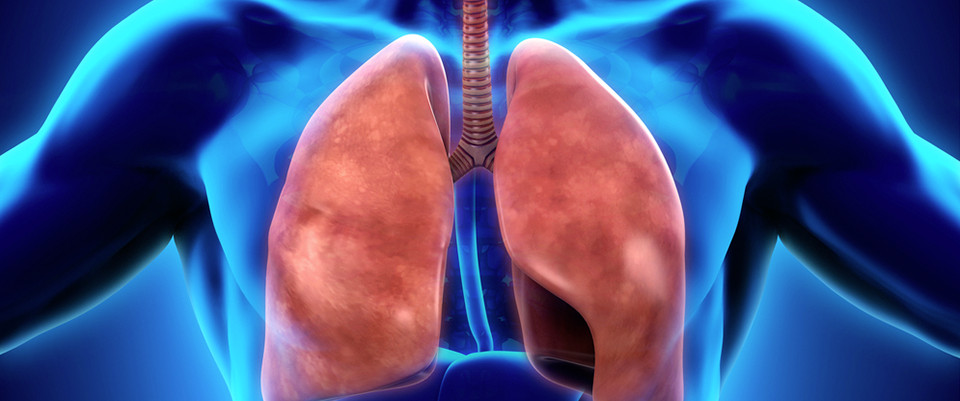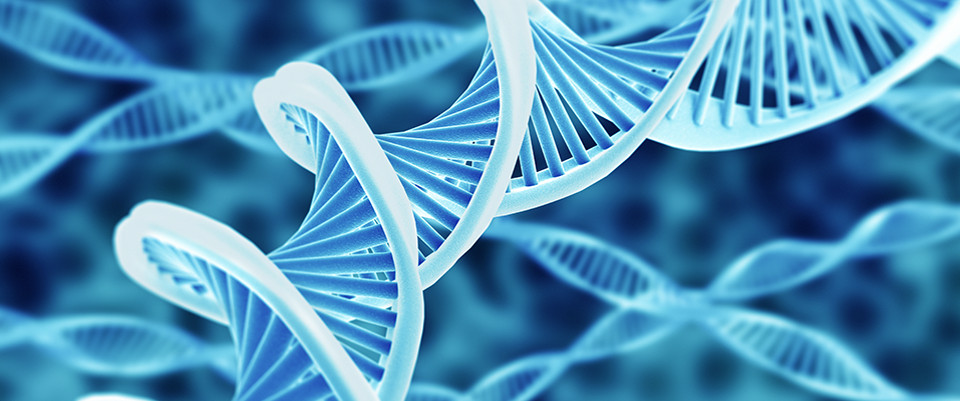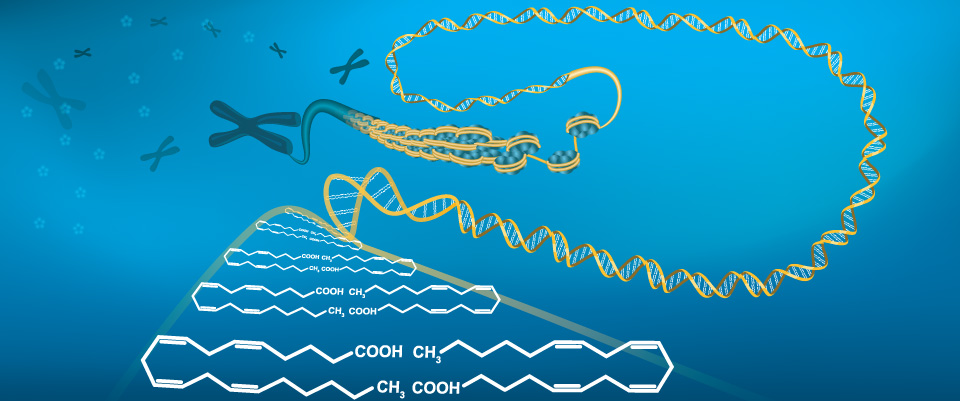PubMed
Integrated metabolomic and transcriptomic analysis reveals the role of root phenylpropanoid biosynthesis pathway in the salt tolerance of perennial ryegrass
BMC Plant Biol. 2024 Dec 21;24(1):1225. doi: 10.1186/s12870-024-05961-1.ABSTRACTPerennial ryegrass (Lolium perenne) is a widely cultivated forage and turf grass species. Salt stress can severely damage the growth of grass plants. The genome-wide molecular mechanisms of salt tolerance have not been well understood in perennial grass species. In this study, the salt sensitive genotype P1 (PI265351, Chile) and the salt tolerant genotype P2 (PI368892, Algeria) of perennial ryegrass were subjected to 200 mM NaCl, and transcriptomics and metabolomics analyses were performed. A total of 5,728 differentially expressed genes (DEGs) were identified through pairwise comparisons. Antioxidant enzyme encoding genes (LpSOD1, LpCAT1), ion channel gene LpCaC1 and transcription factors (LpERFs, LpHSF1 and LpMYB1) were significantly upregulated in P2, suggesting their involvement in regulating expression of salt-responsive genes for salt tolerance. Functional analysis of DEGs revealed that biosynthesis of secondary metabolites, carbohydrate metabolism and signal transduction were the main pathways in response to salt stress. Weighted gene co-expression network analysis (WGCNA) based on RNA-Seq data showed that membrane transport and ABC transporters were significantly correlated with salt tolerance-related traits. The combined transcriptomics and metabolomics analysis demonstrated that the phenylpropanoid biosynthesis pathway was a major secondary metabolic pathway in the salt response of perennial ryegrass. Especially, the tolerant genotype P2 had greater amounts of upregulated phenylpropanoids, flavonoids and anthocyanins and higher expressions of relevant genes in the pathway than the sensitive genotype P1, indicating a role of phenylpropanoid biosynthesis for perennial ryegrass to adapt to salt stress. The results provided insights into the molecular mechanisms of perennial ryegrass adaptation to salinity and laid a base for genetic improvement of salt tolerance in perennial grass species.PMID:39709354 | DOI:10.1186/s12870-024-05961-1
Enhanced antioxidant activity improves deep-sowing tolerance in maize
BMC Plant Biol. 2024 Dec 21;24(1):1229. doi: 10.1186/s12870-024-05994-6.ABSTRACTBACKGROUND: Deep sowing has emerged as a vital agricultural strategy, particularly in arid and semi-arid regions, as it allows seeds to access water stored in deeper soil layers. This approach facilitates successful germination and establishment of crops, even in challenging environmental conditions. Previous studies have shown that the length of the maize mesocotyl is an important trait influencing deep-sowing tolerance. Several factors play a crucial role in regulating mesocotyl elongation, primarily including light, hormones, metabolites, and reactive oxygen species (ROS). Therefore, further understanding the regulatory mechanisms of mesocotyl elongation is essential for enhancing maize germination and growth under deep sowing conditions.RESULTS: In this study, we identified a deep sowing-tolerant inbred line, DH65232, which showed significantly increased mesocotyl length compared to B73 under deep sowing conditions. Transcriptome analysis revealed that differentially expressed genes in the mesocotyl of the two inbred lines were mainly enriched in three pathways: hormone regulation, intermediate metabolites, and redox enzymes. Measurements of hormone content and phenotypic analysis following GA3 treatment indicated that GA3 plays a positive role in promoting mesocotyl elongation under deep-sowing stress in the inbred line DH65232. Additionally, untargeted metabolomics revealed that DH65232 exhibited a higher number of differential metabolites related to antioxidant pathway under deep-sowing stress compared to normal sowing. In deep sowing conditions, the determination of POD, CAT, SOD activities, and MDA content in the mesocotyl of B73 and DH65232 shows that DH65232 has a stronger ability to scavenge ROS.CONCLUSIONS: Above all, the inbred line DH65232 exhibits a greater tolerance to deep sowing due to its stronger antioxidant activity. Our study has contributed to a deeper understanding of the complex tolerance mechanisms in maize and provided new insights for the development of new maize varieties under deep sowing conditions.PMID:39709339 | DOI:10.1186/s12870-024-05994-6
Crabtree effect in yeast: a phosphate tug-of-war between fermentation and respiration
Trends Biochem Sci. 2024 Dec 20:S0968-0004(24)00273-1. doi: 10.1016/j.tibs.2024.12.001. Online ahead of print.ABSTRACTThe Crabtree effect in yeast, where cells prefer fermentation over respiration in high -glucose environments, is associated with mitochondrial repression, but the molecular mechanisms were previously unclear. Recently, Vengayil et al. revealed that knocking out the ubp3 gene, encoding a deubiquitinase enzyme, mitigates the Crabtree effect by increasing mitochondrial phosphate levels.PMID:39709253 | DOI:10.1016/j.tibs.2024.12.001
Prognostic models in acute liver failure-historic evolution and newer updates "prognostic models in acute liver failure"
Best Pract Res Clin Gastroenterol. 2024 Dec;73:101957. doi: 10.1016/j.bpg.2024.101957. Epub 2024 Nov 14.ABSTRACTAcute liver failure (ALF) is a rare and dynamic syndrome occurring as a sequela of severe acute liver injury (ALI). Its mortality ranges from 50% to 75% based on the aetiology, patients age and severity of encephalopathy at admission. With improvement in intensive care techniques, transplant-free survival in ALF has improved over time. Timely recognition of patients who are unlikely to survive with medical intervention alone is crucial since these individuals may rapidly develop multiorgan failure and render liver transplantation futile. Various predictive models, biomarkers and AI-based models are currently used in clinical practice, each with its fallacies. The King's College Hospital criteria (KCH) were initially established in 1989 to identify patients with acute liver failure (ALF) caused by paracetamol overdose or other causes who are unlikely to improve with conventional treatment and would benefit from a liver transplant. Since then, various models have been developed and validated worldwide. Most models include age, aetiology of liver disease, encephalopathy grade, and liver injury markers like INR, lactate, factor V level, factor VIII/V ratio and serum bilirubin. But none of the currently available models are dynamic and lack accuracy in predicting transplant free survival. There is an increasing interest in developing prognostic serum biomarkers that when used alone or in combination with clinical models enhance the accuracy of predicting outcomes in ALF. Genomics, transcriptomics, proteomics, and metabolomics as well as machine learning and artificial intelligence (AI) algorithms are areas of interest for developing higher-precision predictive models. Overall, the future of prognostic models in ALF is promising, with ongoing research paving the way for more accurate, personalized, and dynamic risk assessment tools that can potentially save lives in this challenging condition. This article summarizes the history of prognostic models in ALF and future trends.PMID:39709212 | DOI:10.1016/j.bpg.2024.101957
Association between physical activity-related metabolic signature and cardiometabolic diseases and multimorbidity: A cohort study from UK biobank
Prev Med. 2024 Dec 19:108211. doi: 10.1016/j.ypmed.2024.108211. Online ahead of print.ABSTRACTOBJECTIVE: Physical activity has protective effects on cardiometabolic diseases (CMDs), but the role of metabolism related to physical activity in this process is unclear.METHODS: In the prospective cohort study from UK Biobank between 2006 and 2022, participants free of CMDs at baseline were included (n = 73,990). We identified physical activity-related metabolites and constructed metabolic signature using linear regression and elastic net regression. Association between physical activity, metabolic signature, and CMDs (type 2 diabetes [T2D], coronary heart disease [CHD], and stroke) were explored using Cox and mediation analyses. Interactions between the metabolic signature and genetic susceptibility (categorized into "low" and "high" based on the median of polygenic risk scores) were assessed by additive hazard models and relative excess risk due to interaction (RERI). Multi-state models evaluated the association between metabolic signature and disease progression.RESULTS: We found 58 metabolites were related to physical activity, of which 17 were used to construct metabolic signature. The metabolic signature was associated with reduced risk of T2D (HR = 0.13[0.10-0.16]), CHD (HR = 0.40[0.34-0.47]), and stroke (HR = 0.67[0.53-0.86]), and mediated 40.56 % of the association between physical activity and T2D. The metabolic signature exhibited additive interactions with genetic risk for T2D (RERI = 1.57[1.09-2.05]) and CHD (RERI = 0.27[0.05-0.49]). Finally, the metabolic signature was associated with a reduced risk of transition from CMD to CMM (HR = 0.58[0.42-0.81]).CONCLUSION: Physical activity-related metabolic signature is linked to reduced risks of CMDs and CMM. We once again emphasize the importance of physical activity for CMDs prevention from a metabolic perspective, especially for individuals at high genetic risk.PMID:39708996 | DOI:10.1016/j.ypmed.2024.108211
HEK-omics: The promise of omics to optimize HEK293 for recombinant adeno-associated virus (rAAV) gene therapy manufacturing
Biotechnol Adv. 2024 Dec 19:108506. doi: 10.1016/j.biotechadv.2024.108506. Online ahead of print.ABSTRACTGene therapy is poised to transition from niche to mainstream medicine, with recombinant adeno-associated virus (rAAV) as the vector of choice. However, robust, scalable, industrialized production is required to meet demand and provide affordable patient access, which has not yet materialized. Closing the chasm between demand and supply requires innovation in biomanufacturing to achieve the essential step change in rAAV product yield and quality. Omics provides a rich source of mechanistic knowledge that can be applied to HEK293, the most commonly used cell line for rAAV production. In this review, the findings from a growing number of diverse studies that apply genomics, epigenomics, transcriptomics, proteomics, and metabolomics to HEK293 bioproduction are explored. Learnings from CHO-Omics, application of omics approaches to improve CHO bioproduction, provide a framework to explore the potential of "HEK-Omics" as a multi-omics-informed approach providing actionable mechanistic insights for improved transient and stable production of rAAV and other recombinant products in HEK293.PMID:39708987 | DOI:10.1016/j.biotechadv.2024.108506
Huang-Lian-Jie-Du Decoction ameliorates sepsis through dynamic regulation of immune response and gut microbiota-metabolite axis
Microb Pathog. 2024 Dec 19:107246. doi: 10.1016/j.micpath.2024.107246. Online ahead of print.ABSTRACTSepsis remains a life-threatening condition with high mortality rates despite current therapeutic approaches. While Huang-Lian-Jie-Du Decoction (HLJDD), a traditional Chinese medicine formula, has been historically used to treat inflammatory conditions, its therapeutic potential in sepsis and underlying mechanisms remain unexplored. This study investigated HLJDD's comprehensive effects on sepsis pathophysiology using a rat cecal ligation and puncture (CLP) model. HLJDD significantly improved survival rates and demonstrated sophisticated immunomodulatory effects through temporal regulation of the biphasic immune response characteristic of sepsis. In early sepsis, HLJDD suppressed pro-inflammatory cytokines (IL-1β, IL-6) while maintaining defensive inflammation. During late sepsis, it counteracted immunosuppression by reducing IL-10 levels and CD4+CD25+ T cell populations while protecting CD4+ and CD8+ T cells from apoptosis. Notably, HLJDD demonstrated dynamic regulation of the gut microbiota-metabolite axis. It enhanced beneficial bacterial populations (Firmicutes, Lactobacillus) while suppressing potentially pathogenic species (Bacteroides, Parabacteroides). Metabolomic analysis revealed time-dependent modulation of short-chain fatty acids, with elevated levels at 12 h followed by strategic reduction at 18-30 h, coordinating with changes in SCFA-producing bacteria. This temporal metabolic regulation corresponded with improved intestinal barrier function and balanced immune responses. The study unveils HLJDD's novel mechanism of action through synchronized modulation of immune responses, gut microbiota, and metabolite profiles, presenting a multi-target therapeutic approach that addresses the complex pathophysiology of sepsis. These findings provide a strong foundation for further clinical investigation of HLJDD as an innovative treatment strategy for sepsis.PMID:39708977 | DOI:10.1016/j.micpath.2024.107246
Tinospora crispa (L.) Hook.f. & Thomson vines ameliorates hyperuricemia by inhibiting synthesis and promoting excretion of uric acid through targeting NLRP3/caspase-1/IL-1β pathway
J Ethnopharmacol. 2024 Dec 19:119271. doi: 10.1016/j.jep.2024.119271. Online ahead of print.ABSTRACTETHNOPHARMACOLOGICAL RELEVANCE: Tinospora crispa (L.) Hook.f. & Thomson (T. crispa), is widely distributed in Xishuangbanna, Yunnan Province, China. According to the "Selected Medicinal Plants of Yunnan", T. crispa is recognized for its versatile medicinal properties, including promoting diuresis, reducing swelling, relieving pain, relaxing tendons, and promoting blood circulation, suggesting that their extracts can be used to exhibit a range of beneficial activities such as immune regulation, blood sugar reduction, and anti-inflammatory effects. In the Dai ethnic areas of China, T. crispa is commonly employed in the herbal prescription of treatment of hyperuricemia and gouty arthritis. However, further study is needed to enucleate the potential pharmacological mechanism of T. crispa.AIM OF THE STUDY: This study aimed to investigate the effects and mechanisms of T. crispa vines extract (TC) in alleviating hyperuricemia.MATERIALS AND METHODS: A hyperuricemia mouse model was established through intraperitoneal injection of potassium oxonate to evaluate the hypouricemic effects of TC. To explore the underlying mechanisms of TC, network pharmacology analysis was employed. Additionally, a series of experimental approaches-including serum biomarker assays, ELISA, reverse transcription-quantitative PCR (RT-qPCR), histopathological staining, metabolomics analysis and western blotting-were performed to assess the capability of TC in modulating uric acid levels.RESULTS: TC treatment markedly lowered serum biomarkers by inhibiting xanthine oxidase (XOD) activity and modulating the expression of urate transporters, while also alleviating renal injury in hyperuricemic mice. Through bioinformatics and network pharmacology analyses, the NOD-like receptor signaling pathway was identified as a critical mechanism underlying the therapeutic impact of TC. Metabolomics analysis uncovered 14 differential metabolites and seven metabolic pathways linked to the anti-hyperuricemic action of TC. Further experimental validation confirmed that TC attenuated renal inflammation and suppressed activation of the NLRP3/caspase-1/IL-1β signaling pathway.CONCLUSION: Our findings demonstrate that TC exerts a significant uric acid-lowering effect in hyperuricemic mice. This therapeutic effect can be attributed to the suppression of uric acid synthesis and the modulation of urate transporters. Moreover, the inhibition of the NLRP3/caspase-1/IL-1β signaling pathway further contributes to the regulatory action of TC on uric acid homeostasis.PMID:39708936 | DOI:10.1016/j.jep.2024.119271
Development of a high-throughput platform for quantitation of histone modifications on a new QTOF instrument
Mol Cell Proteomics. 2024 Dec 19:100897. doi: 10.1016/j.mcpro.2024.100897. Online ahead of print.ABSTRACTHistone post-translational modifications (PTMs) regulate gene expression patterns through epigenetic mechanisms. The 5 histone proteins (H1, H2A, H2B, H3, and H4) are extensively modified, with over 75 distinct modification types spanning more than 200 sites. Despite strong advances in mass spectrometry-based approaches, identification and quantification of modified histone peptides remains challenging due to factors such as isobaric peptides, pseudo-isobaric PTMs, and low stoichiometry of certain marks. Here we describe the development of a new high-throughput method to identify and quantify over 150 modified histone peptides by liquid chromatography-mass spectrometry (LC-MS). Fast gradient microflow liquid chromatography and variable window SWATH data-independent acquisition on a new quadrupole time-of-flight platform is compared to a previous method using nanoflow LC-MS on an Orbitrap hybrid. Histones extracted from cells treated with either a histone deacetylase inhibitor (HDACi) or TGF-beta 1 were analyzed by data-independent acquisition (DIA) on two mass spectrometers: an Orbitrap Exploris 240 with a 55-minute nanoflow LC gradient, and the SCIEX ZenoTOF 7600 with a 10-minute microflow gradient. To demonstrate the reproducibility and speed advantage of the method, 100 consecutive injections of one sample were performed in less than 2 days on the QTOF platform. The result is the comprehensive characterization of histone PTMs achieved in less than 20 minutes of total run time using only 200 ng of sample. Results for drug-treated histone samples are comparable to those produced by the previous method and can be achieved using less than one-third of the instrument time.PMID:39708910 | DOI:10.1016/j.mcpro.2024.100897
Assessing the effects of dual functional V-type cornstarch films added with kiwifruit peel extracts on preservation of fresh-cut kiwifruits: A metabolomics study
Int J Biol Macromol. 2024 Dec 19:138833. doi: 10.1016/j.ijbiomac.2024.138833. Online ahead of print.ABSTRACTFresh-cut fruit, with nutrition and convenience, has a broad market demand. However, its shelf life is shortened due to its tissue damage. Therefore, the development of cost-effective and eco-friendly multifunctional packaging materials to extend the shelf life of fresh-cut fruits is urgently needed. A cornstarch-based film (CS film) was successfully prepared using V-type corn starch as an ethylene scavenger and kiwifruit peel extract (KPE) as an antioxidant. The film containing 4.00 % (v/v) KPE had a DPPH radical scavenging capability of 52.1 % ± 2.4 % and ABTS radical scavenging capability of 70.4 % ± 4.4 %. The amount of ethylene harvested was 17.27 cm3 g-1. In addition, the malondialdehyde content of fresh-cut kiwifruits covered by CS film decreased by 42.82 % compared with PE film after 72 h, and the hardness increased 71.20 %. And the CS film could regulate ethylene and oxygen concentration, and extending the fresh life of kiwifruit from 3 days to 15 days. Metabolomics and transcriptomic analyses revealed that the CS film regulated ethylene self-promotion and the balance of reactive oxygen species metabolism. As a result, these reduced sugar synthesis and metabolism, which helped to maintain the freshness of fresh-cut kiwifruit. These findings can serve as a reference for developing techniques to preserve the packaging of fresh-cut fruits.PMID:39708893 | DOI:10.1016/j.ijbiomac.2024.138833
Metabolic profiling of patient-derived organoids reveals nucleotide synthesis as a metabolic vulnerability in malignant rhabdoid tumors
Cell Rep Med. 2024 Dec 11:101878. doi: 10.1016/j.xcrm.2024.101878. Online ahead of print.ABSTRACTMalignant rhabdoid tumor (MRT) is one of the most aggressive childhood cancers for which no effective treatment options are available. Reprogramming of cellular metabolism is an important hallmark of cancer, with various metabolism-based drugs being approved as a cancer treatment. In this study, we use patient-derived tumor organoids (tumoroids) to map the metabolic landscape of several pediatric cancers. Combining gene expression analyses and metabolite profiling using mass spectrometry, we find nucleotide biosynthesis to be a particular vulnerability of MRT. Treatment of MRT tumoroids with de novo nucleotide synthesis inhibitors methotrexate (MTX) and BAY-2402234 lowers nucleotide levels in MRT tumoroids and induces apoptosis. Lastly, we demonstrate in vivo efficacy of MTX in MRT patient-derived xenograft (PDX) mouse models. Our study reveals nucleotide biosynthesis as an MRT-specific metabolic vulnerability, which can ultimately lead to better treatment options for children suffering from this lethal pediatric malignancy.PMID:39708810 | DOI:10.1016/j.xcrm.2024.101878
Different effects of fatty acid oxidation on hematopoietic stem cells based on age and diet
Cell Stem Cell. 2024 Dec 12:S1934-5909(24)00413-2. doi: 10.1016/j.stem.2024.11.014. Online ahead of print.ABSTRACTFatty acid oxidation is of uncertain importance in most stem cells. We show by 14C-palmitate tracing and metabolomic analysis that hematopoietic stem/progenitor cells (HSPCs) engage in long-chain fatty acid oxidation that depends upon carnitine palmitoyltransferase 1a (CPT1a) and hydroxyacyl-CoA dehydrogenase (HADHA) enzymes. CPT1a or HADHA deficiency had little or no effect on HSPCs or hematopoiesis in young adult mice. Young HSPCs had the plasticity to oxidize other substrates, including glutamine, and compensated for loss of fatty acid oxidation by decreasing pyruvate dehydrogenase phosphorylation, which should increase function. This metabolic plasticity declined as mice aged, when CPT1a or HADHA deficiency altered hematopoiesis and impaired hematopoietic stem cell (HSC) function upon serial transplantation. A high-fat diet increased fatty acid oxidation and reduced HSC function. This was rescued by CPT1a or HADHA deficiency, demonstrating that increased fatty acid oxidation can undermine HSC function. Long-chain fatty acid oxidation is thus dispensable in young HSCs but necessary during aging and deleterious with a high-fat diet.PMID:39708796 | DOI:10.1016/j.stem.2024.11.014
Functional role of DFR genes in various blue Iris for the regulation of delphinidin synthesis
Plant Physiol Biochem. 2024 Nov 27;219:109355. doi: 10.1016/j.plaphy.2024.109355. Online ahead of print.ABSTRACTFlowers belonging to the Iris genus, with a predominant display of blue hues, showcase a variety of blue polymorphisms across different species. This study focused on analyzing the L∗, a∗, and b∗ color values of Iris typhifolia, I. lactea, I. laevigata, and I. sanguinea. Notably, I. lactea exhibited the highest L∗ value, indicating a brighter hue, while I. typhifolia and I. laevigata displayed larger a∗ values, suggesting a shift towards a reddish tone. I. sanguinea, conversely, presented the most profound blue with the lowest b∗ value. Our research delved into understanding the influence of anthocyanin components on these color variations and explored the regulatory role of the dihydroflavonol-4-reductase (DFR) gene. The findings underscore delphinidin as the primary blue pigment, with the additional presence of petunidin in I. typhifolia and I. laevigata introducing a purplish-red hue. Flavonoids were identified as contributors to enhancing the brightness of I. lactea's color. The study elucidates that blue polymorphism predominantly arises from varying proportions of delphinidin pigments, closely linked to substrate selection by Asp type DFRs. Following the expression of different DFR genes from the two blue Iris species, significant substrate selection differences were observed. These findings lay a foundation for future efforts to enhance flower colors in Irises and other related species by offering DFR as a target candidate gene.PMID:39708701 | DOI:10.1016/j.plaphy.2024.109355
A cell-based exploration of environmental and health impacts of food waste digestate for its sustainable reutilization
J Environ Manage. 2024 Dec 20;373:123795. doi: 10.1016/j.jenvman.2024.123795. Online ahead of print.ABSTRACTAnaerobic digestion of food waste is increasingly utilized for bioenergy generation, producing a byproduct known as food waste digestate (FWD), which has potential applications as a fertilizer within the circular economy. However, accumulating numerous pollutants in FWD poses significant challenges to environmental management and human health. The complex nature of these pollutants complicates both targeted and non-targeted chemical analyses, making safety evaluations difficult. To address this, we developed a toxicity evaluation protocol based on comprehensive cellular effects to assess the safety profile of FWD. Our study found that human FHC cells were significantly more sensitive to FWD solutions, with 1.2-, 1.8-, and 1.7-fold greater sensitivity than GES-1, HepG2, and HEK293 cells. We identified oxidative stress levels and the activation of the NF-κB signaling pathway as crucial and sensitive indicators of FWD-induced toxicity. Metabolomics analysis revealed that FWD triggered the activation of the inflammatory mediator regulation of the transient receptor potential channels pathway, indicating a cellular response aimed at mitigating damage through immune repair mechanisms. By comprehensively assessing these cellular and molecular indicators, we can better predict the potential human and environmental risks associated with FWD. This knowledge is essential for establishing safety guidelines and appropriate dilution ratios for FWD reutilization, enhancing environmental management practices within a circular economy framework.PMID:39708690 | DOI:10.1016/j.jenvman.2024.123795
Unraveling key non-volatiles responsible for taste differences of Pixian broad bean paste based on sensory analysis and untargeted metabolomics
Food Chem. 2024 Dec 18;469:142565. doi: 10.1016/j.foodchem.2024.142565. Online ahead of print.ABSTRACTBesides aroma, the tastes of Pixian Broad Bean Paste (PBBP) are also important, however, they have not yet been thoroughly elucidated. Therefore, this study employed sensory and untargeted metabolomics approaches to investigate taste characteristics, molecular basis and their metabolic pathways of PBBP from three different manufacturers and two grades. Results showed PBBP was predominantly characterized by strong sour, umami and salty tastes, and significant differences were observed in samples from different manufacturers and grades (p < 0.05), especially higher sourness, saltiness and umami in premium PBBP. Based on non-volatiles, 55 key differential metabolites were identified through orthogonal partial least square discriminant analysis (OPLS-DA, P value<0.05, VIP value>1.0) and Pearson correlation analysis (|ρ| > 0.7). These key differential metabolites responsible for taste differences were metabolized by 36 crucial KEGG pathways (P value<0.05, impact value>0.05). These results could expand our understandings of PBBP taste compounds and their metabolisms, and provide theoretical evidences for further quality improvement.PMID:39708645 | DOI:10.1016/j.foodchem.2024.142565
Chuanxiong Qingnao Granules (CQG) alleviates nitroglycerin-induced migraine-like pain in rats by glycerophospholipid metabolism and PI3K/Akt signaling pathway
Phytomedicine. 2024 Dec 17;136:156336. doi: 10.1016/j.phymed.2024.156336. Online ahead of print.ABSTRACTBACKGROUND AND PURPOSE: Chuanxiong Qingnao Granles (CQG), has been used to treat migraine headache (MH) for many years. However, current investigation of CQG have primarily focused on clinical studies, and the potential mechanisms underlying of its effects on MH have not been fully elucidated. In the present study, we applied an integrated approach of transcriptomics and metabolomics to elucidate the therapeutic mechanisms of CQG in nitroglycerin (NTG)-induced MH injury.METHODS AND RESULTS: Fifty rats were allocated into five random groups: control (Con), NTG, flunarizine (NTG + Flu) group, and two CQG groups (NTG + CQG-L and NTG + CQG-H). CQG notably reduced the duration of ear redness and the frequency of head scratching frequency in rats. It also lowered the levels of 5-hydroxytryptamine (5-HT), endothelin-1 (ET-1), calcitonin gene-related peptide type 1 receptor (CGPR1), and tumor necrosis factor alpha (TNF-α) and enhanced neuronal morphology following NTG-induced MH damage. Transcriptomic and metabolomic analyses pinpointed interleukin (IL)-17A, IL-13, and CC chemokine receptor type 3 (CCR3) as central CQG targets, glycerophospholipid metabolism as key metabolic pathway, and further experiments confirmed that CQG reduced the expression of IL-17A, IL-13, CCR3, and inhibited the expression of inflammatory cytokines by suppressing PI3K/Akt signaling pathway and glycerophospholipid metabolism, to attenuate neuroinflammation in MH rats.CONCLUSIONS: Taken together, CQG inhibited PI3K/Akt signaling pathway to reduced neuroinflammation, and modulated metabolic pathway of glycerophospholipid metabolism in MH. The findings of this study offer novel insights into the mechanisms underlying the therapeutic effects of CQG, highlighting its potential clinical application in treatment of MH.PMID:39708589 | DOI:10.1016/j.phymed.2024.156336
Capilliposide A alleviates DSS-induced colitis by regulating the intestinal flora and its metabolites of origin
Int Immunopharmacol. 2024 Dec 20;146:113858. doi: 10.1016/j.intimp.2024.113858. Online ahead of print.ABSTRACTUlcerative colitis is a chronic idiopathic inflammatory disease that impacts the mucous membrane of the colon. Lately, the incidence and prevalence of UC has been increasing globally. However, there are significant side effects of existing drugs for UC intervention. Accordingly, there is a pressing demand to explore novel bioactive substances for addressing UC. Natural product saponins have attracted great attention due to their obvious anti-colitis potential. Capilliposide A is a triterpenoid saponin, which is derived from Lysimachia capillipes Hemsl., exhibits good anti-inflammatory activity. Nonetheless, the impact and mechanism of CPS-A on ulcerative colitis remains obscure. This study aimed to investigate the therapeutic effects of CPS-A on the dextran sulphate sodium induced colitis mouse model and explore its mechanism. The efficacy and safety of CPS-A were evaluated in a well-established dextran sodium sulfate (DSS)-induced colitis mice model. Disease progression was monitored via clinical symptoms, histopathological examination, quantification of inflammatory cytokines, and epithelial barrier function evaluation. Plasma samples and intestinal contents were collected for non-targeted metabolomics and 16sRNA sequencing, respectively, to jointly evaluate the mechanism of action. CPS-A alleviated colitis by improving weight, Disease activity index score, histopathology, goblet cell, colon length, and expression of inflammatory factors. Moreover, CPS-A effectively preserved the integrity of the intestinal barrier by enhancing the expression of tight junction proteins and mucin in the colonic tissue of mice. Furthermore, CPS-A exerted a regulatory effect on the composition of the gut microbiota, promoting bacterial richness and diversity. It not only suppressed the abundance of detrimental bacteria while enhancing the abundance of advantageous bacteria, but also modulated the metabolites derived from the intestinal flora. Importantly, correlation analysis shows that these indicators are highly correlated. This study revealed that CPS-A exhibits a favorable therapeutic efficacy against colitis, primarily attributed to its ability to modulate the gut microbiota their associated metabolites as the key mechanisms of action.PMID:39708482 | DOI:10.1016/j.intimp.2024.113858
Integrated analysis of biochemical, transcriptomic, and metabolomic response mechanisms in Ussuri catfish (Pseudobagrus ussuriensis) under acute heat stress
Ecotoxicol Environ Saf. 2024 Dec 20;290:117563. doi: 10.1016/j.ecoenv.2024.117563. Online ahead of print.ABSTRACTFish metabolism, growth, development, and physiological conditions are highly sensitive to fluctuations in water temperature. The Ussuri catfish (Pseudobagrus ussuriensis) is an important native economic species in China. However, research on heat stress in P. ussuriensis, particularly concerning gene expression and metabolites, remains limited. In this study, we conducted histological observations, biochemical measurements, transcriptomic analysis, and metabolomic analysis on liver tissue from a control group (22 ℃), an acute heat stress group (34 ℃, with samples taken at 0, 3, 6, 12, and 24 h), and a recovery group (sampled 24 h after recovery to 22 ℃). Histopathological analysis showed that liver damage worsened with the duration of heat stress. Biochemical results indicated that acute heat stress significantly impacted the activities of superoxide dismutase, catalase, and alanine aminotransferase, as well as the levels of glutathione, malondialdehyde, and total antioxidant capacity, with alterations remaining even after temperature recovery. Transcriptomic and metabolomic analyses revealed that compared to the control group, 3482, 800, 980, and 1479 differentially expressed genes (DEGs) were detected at 0, 6, and 24 h of acute heat stress and at 24 h post-recovery, respectively. Similarly, 114, 151, 365, and 326 differentially expressed metabolites (DEMs), respectively, were detected at the same time points. Furthermore, when comparing 24 h of heat stress with 24 h of recovery, 1279 DEGs and 157 DEMs were identified. Functional enrichment analysis revealed that these DEGs and DEMs were significantly enriched in key pathways, such as endoplasmic reticulum protein processing and glutathione metabolism, with significant changes continuing into the recovery phase. Additionally, substantial alterations in the expression levels of amino acids, sugars, and lipids were observed during heat stress. These findings provide valuable insights into the defense mechanisms of fish under high-temperature stress and lay a theoretical foundation for breeding heat-resistant P. ussuriensis strains, as well as improving sustainable aquaculture management.PMID:39708448 | DOI:10.1016/j.ecoenv.2024.117563
Associations of gestational anxiety and depression with neonatal hair steroid levels
Psychoneuroendocrinology. 2024 Dec 19;172:107260. doi: 10.1016/j.psyneuen.2024.107260. Online ahead of print.ABSTRACTOBJECTIVE: To investigate the association prenatal maternal depression and anxiety may have on the levels of neonatal hair steroids (i.e. cortisol, cortisone, and the cortisol/cortisone ratio) at birth.METHODS: Altogether, 271 mother-infant pairs derived from the Finnish Kuopio Birth Cohort Study were assessed for maternal depression and anxiety using the Edinburgh Postnatal Depression Scale (EPDS: EPDS-10 for depression, EPDS-3A for anxiety) during the first (T1) and third (T3) trimesters. The levels of cortisol and cortisone were determined from neonatal hair samples obtained at birth. Linear mixed models adjusted for sex, preterm birth, smoking during pregnancy, and gestational diabetes were used.RESULTS: Neither T1 nor T3 EPDS-10 predicted the levels of neonatal hair steroids. T3 EPDS-3A (p = 0.012), but not T1 EPDS-3A, was linked to reduced neonatal hair cortisol levels. Neither T1 nor T3 EPDS-3A were significant predictors of neonate cortisone levels or cortisol/cortisone ratios.CONCLUSION: Prenatal maternal anxiety, but not depression, may lead to pronounced alterations in some markers of fetal stress systems. Future research should further determine whether prenatal maternal symptoms of anxiety would form an optimal intervention target in order to attenuate fetal stress responses.PMID:39708437 | DOI:10.1016/j.psyneuen.2024.107260
Untargeted Spatial Metabolomics and Spatial Proteomics on the Same Tissue Section
Anal Chem. 2024 Dec 21. doi: 10.1021/acs.analchem.4c04462. Online ahead of print.ABSTRACTAn increasing number of spatial multiomic workflows have recently been developed. Some of these approaches have leveraged initial mass spectrometry imaging (MSI)-based spatial metabolomics to inform the region of interest (ROI) selection for downstream spatial proteomics. However, these workflows have been limited by varied substrate requirements between modalities or have required analyzing serial sections (i.e., one section per modality). To mitigate these issues, we present a new multiomic workflow that uses desorption electrospray ionization (DESI)-MSI to identify representative spatial metabolite patterns on-tissue prior to spatial proteomic analyses on the same tissue section. This workflow is demonstrated here with a model mammalian tissue (coronal rat brain section) mounted on a poly(ethylene naphthalate)-membrane slide. Initial DESI-MSI resulted in 160 annotations (SwissLipids) within the METASPACE platform (≤20% false discovery rate). A segmentation map from the annotated ion images informed the downstream ROI selection for spatial proteomics characterization from the same sample. The unspecific substrate requirements and minimal sample disruption inherent to DESI-MSI allowed for an optimized, downstream spatial proteomics assay, resulting in 3888 ± 240 to 4717 ± 48 proteins being confidently directed per ROI (200 μm × 200 μm). Finally, we demonstrate the integration of multiomic information, where we found ceramide localization to be correlated with SMPD3 abundance (ceramide synthesis protein), and we also utilized protein abundance to resolve metabolite isomeric ambiguity. Overall, the integration of DESI-MSI into the multiomic workflow allows for complementary spatial- and molecular-level information to be achieved from optimized implementations of each MS assay inherent to the workflow itself.PMID:39708340 | DOI:10.1021/acs.analchem.4c04462











